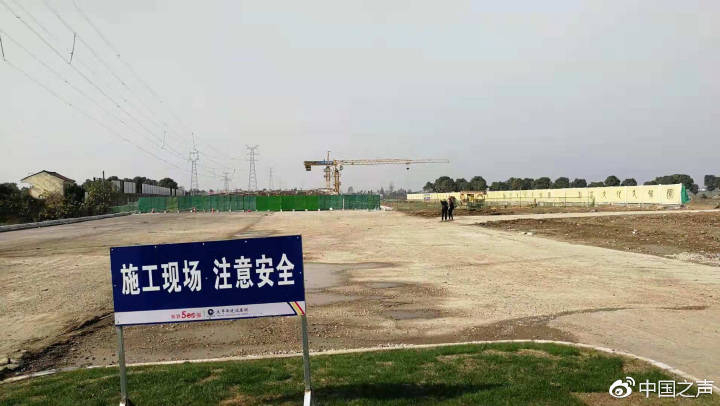
China
12:35, 25-Nov-2018
Continuous death of Chinese sturgeons suspends tourism development
Updated
12:19, 28-Nov-2018
CGTN

Construction of a bridge at an eco resort in Jingzhou, central China's Hubei Province has come to a halt after 36 Chinese sturgeons were found dead at a breeding farm nearby.
The 36 dead mature Chinese sturgeons were believed to have been affected by noise, vibration and changes of water conditions due to the recent tourism resources development which forced the breeding farm to scale down to approximately 53,000 square meters from its original 110,000 square meters.

Construction of a bridge near the Chinese sturgeon breeding farm has been suspended. /Photo via China National Radio
Construction of a bridge near the Chinese sturgeon breeding farm has been suspended. /Photo via China National Radio
The Chinese Sturgeon was listed as critically endangered by the International Union for Conservation of Nature (ICUN) since 2009. The fish mainly inhabits the Yangze River and many adult sturgeons are captured to help with artificial breeding programs.

Chinese sturgeons /VCG Photo
Chinese sturgeons /VCG Photo
The Yangtze River Fisheries Institute, together with the local aquarium department has been carrying out investigations and ordered the eco resort developer to immediately pause construction work in 2017 until the breeding farm completes its relocation.
However, the resort developer refused to stop construction work, saying that they had not heard any complaint or reports of Chinese sturgeon deaths from the breeding farm and denied any damage to the farm in August of this year.
An unnamed person from the resort's administration department said that the bridge had to be put into service for the garden expo in September and that the majority of work had been suspended except for maintenance work. Noise and vibrations had been lowered down to a minimum, the person added.
The developer also said that the breeding farm had previously been offered compensation of 90 million yuan (13 million US dollars) to move, which is far higher than the practical evaluation of around 41 million yuan (6 million US dollars).

The Chinese sturgeon breeding farm is separated by a wall from the construction work. /Photo via China National Radio
The Chinese sturgeon breeding farm is separated by a wall from the construction work. /Photo via China National Radio
The farm responded that it had not received any detailed official assessment report and hoped the related state department could help deal with the problem.
Wei Qiwei, a scientist at the Yangtze River Fishery Administration stated that when he dissected the carcass of a deceased fish he found water in the fish's bladder which is highly abnormal. He stated that it is most likely linked to the construction work.
“Machines are frightening to the creatures and their water source is decreasing. A lot of fish are huddled together. All of these contributed to the death of the Chinese sturgeons,” Wei added.

The Chinese sturgeon breeding farm in Jingzhou City, central China's Hubei Province. /Photo via China National Radio
The Chinese sturgeon breeding farm in Jingzhou City, central China's Hubei Province. /Photo via China National Radio
According to China National Radio, this particular breeding farm was one of the first batches of Chinese sturgeon rearing and breeding bases authorized by the Ministry of Agriculture and Rural Affairs in 1999. A total of 567 Chinese sturgeons have been artificially bred from wild parents across 20 years at the base.

SITEMAP
Copyright © 2018 CGTN. Beijing ICP prepared NO.16065310-3
Copyright © 2018 CGTN. Beijing ICP prepared NO.16065310-3